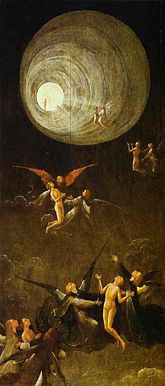Near Death Experience

A near-death experience (NDE) is an experience reported by a person who nearly died, or who experienced clinical death and then revived. NDEs include one or more of the following experiences: a sense of being dead; an out-of-body experience; a sensation of floating above one's body and seeing the surrounding area; a sense of overwhelming love and peace; a sensation of moving upwards through a tunnel or narrow passageway; meeting deceased relatives or spiritual figures; encountering a being of light, or a light; experiencing a life review; reaching a border or boundary; and a feeling of being returned to the body, often accompanied by reluctance. (Psychology Today[1])
Interest in the NDE was originally spurred by the research of psychiatrists Elisabeth Kübler-Ross, George Ritchie, and Raymond Moody Jr. In 1998, Moody was appointed chair in "consciousness studies" at the University of Nevada, Las Vegas. The International Association for Near-death Studies (IANDS) was founded in 1978 to meet the needs of early researchers and experiencers within this field of research. Later researchers, such as psychiatrist Bruce Greyson, psychologist Kenneth Ring, and cardiologist Michael Sabom, introduced the study of near-death experiences to the academic setting.